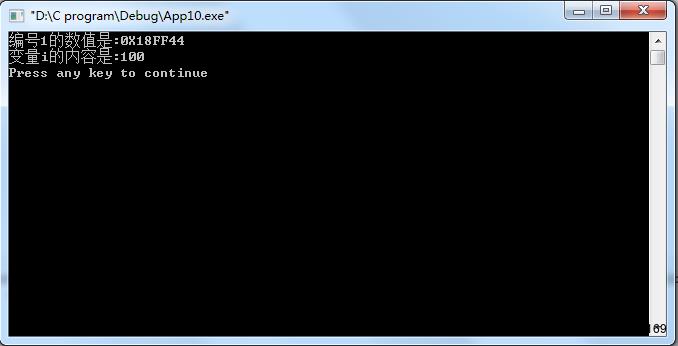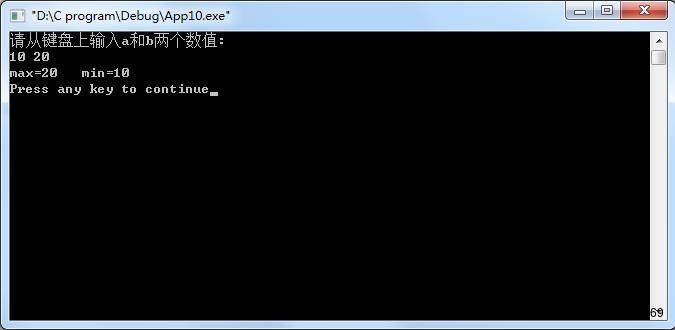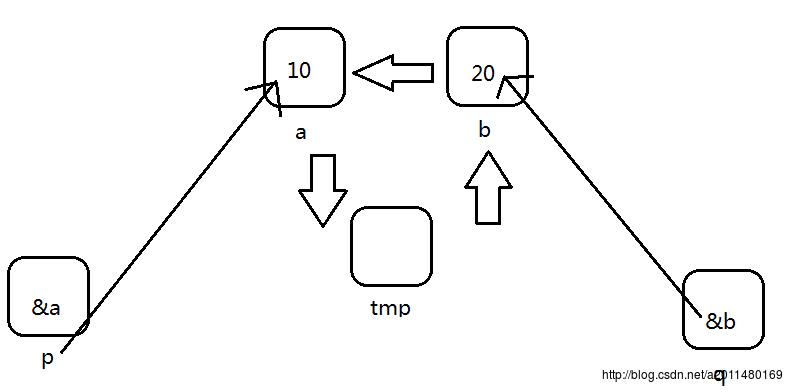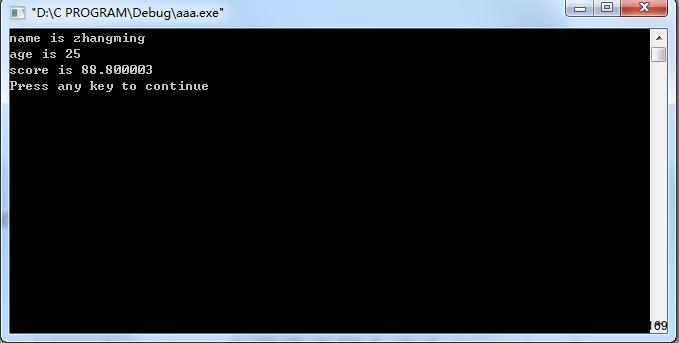C语言指针的内存分配和Java中的引用
Posted 天生爱赞美
tags:
篇首语:本文由小常识网(cha138.com)小编为大家整理,主要介绍了C语言指针的内存分配和Java中的引用相关的知识,希望对你有一定的参考价值。
核心内容:
1、C语言指针的核心知识点
2、处理指针相关问题的万能措施—-内存分配图
3、C语言的指针是如何过渡到Java中的引用的
最近一段时间一直在学习C语言的指针,也算是颇有心得吧,虽然从网上看了几篇关于指针的博文,但是感觉都不符合自己的口味,于是决定好好写一篇关于指针的文章。
C语言指针的核心知识点:
1、指针就是地址,地址就是内存单元的编号,范围是0到4G-1,指针的本质就是一个操作受限的非负整数,而指针变量就是存放内存单元编号(即地址、指针)的变量。
2、凡是动态分配的内存,都是没有名字的,而是将其地址赋给一个指针变量,用指针变量去代表这个事物。
3、一个指针变量,无论其指向的变量占多少个字节,其本身只占用4个字节的内存空间,因为内存单元的编号是32位。32/8=4
4、字节是存储数据的基本单元,一个字节占8位,而一个字节的编号占32位。
5、变量分为两种类型:普通类型变量和指针类型变量,其中普通类型变量用来存放真实的数据,而指针类型变量用来存放变量的地址。其中指针类型变量包括(Java中):
①所有类定义的变量:如 Student student = new Student(“zhang” , 25),其中的student
②所有接口定义的变量:如 List list = new ArrayList(),其中的list
③数组的名字:如int a[] = 1,2,3,8,9中的a。
6、静态内存是在栈中进行分配的,是由系统自动分配、自动释放的,静态内存是程序员无法控制的;动态内存是在堆中进行分配的,是由程序员手动分配,手动释放的,凡是动态分配的内存必须通过free的方式才能够进行释放,当然这里指的是C语言;在Java当中,动态分配的内存是由内存回收机制来回收的,不用程序员来进行手动回收,保证了程序的安全性,但是在Java当中,由于虚拟机要一直跟踪每一块内存空间的使用情况,所以往往会从造成CPU的使用率过大。
好的,如果你想学会C语言中的指针,上面的这些内容是你必须要理解的,首先我们先理解一下究竟什么是指针,在理解究竟什么是指针之前,我们必须要知道数据在内存中究竟是如何来进行存储的,先放一张图:

这里通过一个小例子来说明数据在内存中是如何来进行存储的:

当我们在Visiual C++6.0软件对这个程序进行编译运行的时候,Visiual C++6.0这个软件首先请求操作系统为我们的变量i分配一块内存空间,随后操作系统会在内存中寻找一块空闲的区域分配给我们的程序,随后Visiual C++6.0这个软件会将变量i和我们的这块内存空间关联起来,今后对变量i的操作就是对我们内存空间的操作。具体实现过程如下:

现在我们对内存存储的这一块区域进行放大:

操作系统会给我们的变量分配一块内存空间,但是这块内存空间究竟在内存中的什么位置呢?这块内存空间在内存空间中的编号到底是多少呢?现在让我么在程序中输出一下:
- 1
- 2
- 3
- 4
- 5
- 6
- 7
- 8
- 9
- 10
- 1
- 2
- 3
- 4
- 5
- 6
- 7
- 8
- 9
- 10
运行结果:

现在我们用图画在描述一下:

在上面这张图中: (即编号1)就是我们所说的指针,即地址,也就是说:指针实际上就是内存单元的编号,一个编号为32位,每一个内存单元都会占有一个内部单元的编号(即地址)记载其在内存条中的位置,因此通过指针我们可以直接对硬件进行操作。
(即编号1)就是我们所说的指针,即地址,也就是说:指针实际上就是内存单元的编号,一个编号为32位,每一个内存单元都会占有一个内部单元的编号(即地址)记载其在内存条中的位置,因此通过指针我们可以直接对硬件进行操作。
其实,程序归根结底就是对内存的操作,我们对一块内存空间进行操作总共含有两种方式:
①直接通过变量名的方式对这块内存空间进行操作。(直接访问)
②通过获取内存空间的地址对这块内存空间进行操作。(间接访问)

其中,第一种方式是我们经常使用的,但是第二种方式会让我们有一种直接接触到硬件的感觉,示例程序:
- 1
- 2
- 3
- 4
- 5
- 6
- 7
- 8
- 9
- 10
- 11
- 12
- 13
- 14
- 15
- 16
- 1
- 2
- 3
- 4
- 5
- 6
- 7
- 8
- 9
- 10
- 11
- 12
- 13
- 14
- 15
- 16
运行结果:

具体效果:

归根接地就是一句话:无论是通过变量名i的直接访问,还是通过地址18FF44的间接访问,本质上都是对同一块内存空间的访问。
处理指针相关问题的万能措施—-内存分配图
很多人在处理指针这块的程序的时候,有的时候总是会感觉到很迷糊,但是就我个人而言,对于指针相关的知识,总是习惯于去画内存分配图去解决问题,而且效果还是非常好的,下面我们就用一个典型的程序:交换内容的程序来说明问题。
要求:输入a和b两个整数,按照先大后小的顺序输出a和b。
实例程序1:
- 1
- 2
- 3
- 4
- 5
- 6
- 7
- 8
- 9
- 10
- 11
- 12
- 13
- 14
- 15
- 16
- 17
- 18
- 19
- 20
- 21
- 22
- 23
- 24
- 25
- 26
- 1
- 2
- 3
- 4
- 5
- 6
- 7
- 8
- 9
- 10
- 11
- 12
- 13
- 14
- 15
- 16
- 17
- 18
- 19
- 20
- 21
- 22
- 23
- 24
- 25
- 26
运行结果:

很明显,从运行结果上来看,并没有达到我们的预期效果,下面我们用内存分配图来查找一下原因:

所以上面程序的解法是错误的。
实例程序2:
- 1
- 2
- 3
- 4
- 5
- 6
- 7
- 8
- 9
- 10
- 11
- 12
- 13
- 14
- 15
- 16
- 17
- 18
- 19
- 20
- 21
- 22
- 23
- 24
- 25
- 26
- 1
- 2
- 3
- 4
- 5
- 6
- 7
- 8
- 9
- 10
- 11
- 12
- 13
- 14
- 15
- 16
- 17
- 18
- 19
- 20
- 21
- 22
- 23
- 24
- 25
- 26
运行结果:

内存分配图:

通过上面的图解我们可以发现,指针变量p和q分别定位到了变量a和变量b的内存空间,间接的交换了a和b内存空间的内容。
C语言的指针是如何过渡到Java中的引用的
在谈到这个问题的时候,我认为应该从两个方面进行说起:动态内存分配和如何传递发送内容。
动态内存份分配的问题:
实例程序1:
- 1
- 2
- 3
- 4
- 5
- 6
- 7
- 8
- 9
- 10
- 11
- 12
- 13
- 14
- 15
- 16
- 17
- 18
- 19
- 20
- 21
- 22
- 23
- 24
- 25
- 1
- 2
- 3
- 4
- 5
- 6
- 7
- 8
- 9
- 10
- 11
- 12
- 13
- 14
- 15
- 16
- 17
- 18
- 19
- 20
- 21
- 22
- 23
- 24
- 25
运行结果:

内存实例图示:

对于上面的这个程序,Java语言是这么封装的:
- 1
- 2
- 3
- 4
- 5
- 6
- 7
- 8
- 9
- 10
- 11
- 12
- 13
- 14
- 15
- 16
- 17
- 18
- 19
- 20
- 21
- 1
- 2
- 3
- 4
- 5
- 6
- 7
- 8
- 9
- 10
- 11
- 12
- 13
- 14
- 15
- 16
- 17
- 18
- 19
- 20
- 21
下面我们通过函数传递数据:传递指针变量(本质传递的是地址)
- 1
- 2
- 3
- 4
- 5
- 6
- 7
- 8
- 9
- 10
- 11
- 12
- 13
- 14
- 15
- 16
- 17
- 18
- 19
- 20
- 21
- 22
- 23
- 24
- 25
- 26
- 27
- 28
- 29
- 30
- 31
- 32
- 33
- 34
- 35
- 36
- 1
- 2
- 3
- 4
- 5
- 6
- 7
- 8
- 9
- 10
- 11
- 12
- 13
- 14
- 15
- 16
- 17
- 18
- 19
- 20
- 21
- 22
- 23
- 24
- 25
- 26
- 27
- 28
- 29
- 30
- 31
- 32
- 33
- 34
- 35
- 36
运行结果:

Java封装的效果: